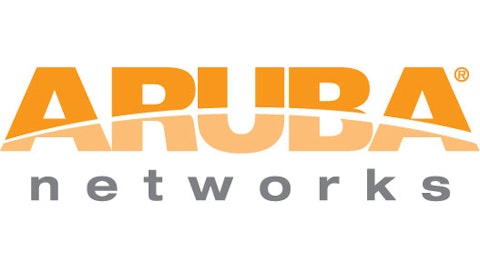More recently, Google Inc (NASDAQ:GOOG) is about to launch its highly anticipated Moto X — its “iPhone killer,” as it were. The new device may launch as early as next month on Verizon Communications Inc. (NYSE:VZ) Wireless. In preparation, Big G launched a new ad campaign — on July 4th weekend, no less — that proudly describes the device as “Designed by you. Assembled in the USA.”

Full-page Moto X ad that began running on July 3. Source: Ad Age.
The company calls it the “first smartphone designed, engineered and assembled in the USA,” despite the fact that there are more than 130 million smartphones in use right now in the U.S. Every single unit will be assembled in Fort Worth, Texas, and the relatively closer proximity to Motorola’s design and engineering teams in Illinois and California will facilitate faster design cycles and a leaner supply chain. The patriotic brownie points don’t hurt either.
The software bellwether
That might change soon, though, as Microsoft Corporation (NASDAQ:MSFT) increasingly looks to create its own first-party devices in the pursuit of becoming a devices-and-services company. Its Surface tablets are currently assembled by Taiwanese contract manufacturer Pegatron. Foxconn builds the Xbox 360. Pegatron and Foxconn are Apple’s two main manufacturers also.
At what cost?
It also depends on the definition of “Assembled in the USA.” In order for a company to earn that mark, the Federal Trade Commission requires:
A product that includes foreign components may be called “Assembled in USA” without qualification when its principal assembly takes place in the U.S. and the assembly is substantial. For the “assembly” claim to be valid, the product’s last “substantial transformation” also should have occurred in the U.S. That’s why a “screwdriver” assembly in the U.S. of foreign components into a final product at the end of the manufacturing process doesn’t usually qualify for the “Assembled in USA” claim.
The “foreign components” part is particularly notable, because the supply chain for all the ingredients that go into your favorite gadgets will likely always be abroad, mostly in Asia. Many of the other crucial aspects of a product, such as design, packaging, engineering, and marketing, usually do take place in the U.S. The final stage of assembly may start to take place domestically more often, but it’s simply not feasible for all parts of the process to take place here in the U.S.
The tech giants can bring some of these jobs back home to bolster the domestic economy in the name of patriotism, but they can’t bring them all back. It would just cost too much.
The article Can the Future of Tech Truly Be Made in America? originally appeared on Fool.com is written by Evan Niu, CFA.
Fool contributor Evan Niu, CFA, owns shares of Apple. The Motley Fool recommends Apple, Cisco Systems, Facebook, Google, and Netflix. The Motley Fool owns shares of Apple, Facebook, Google, Microsoft, Netflix, and Oracle..
Copyright © 1995 – 2013 The Motley Fool, LLC. All rights reserved. The Motley Fool has a disclosure policy.




